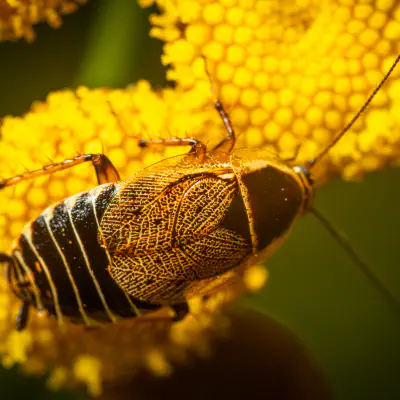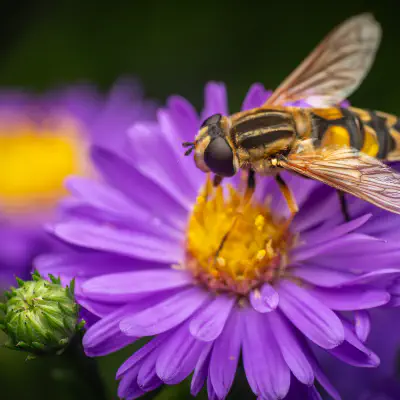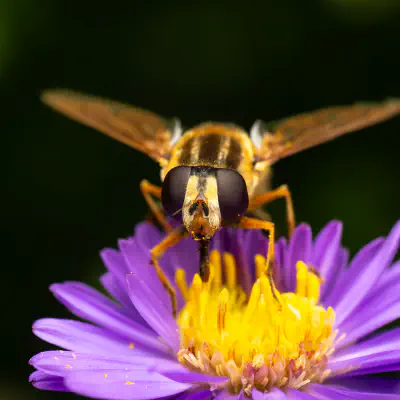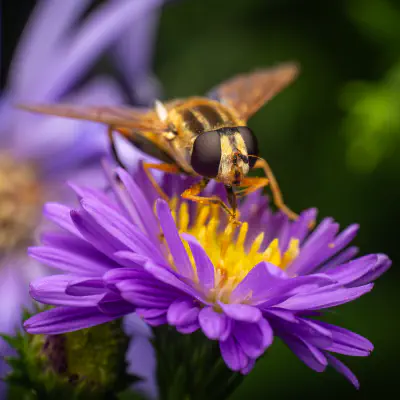The scientific genus name is composed of the parts helos (ἕλος, gr.), meaning "marsh" and philos (φίλος, gr.) meaning "friend". The species name is composed by "tri" (lat.), meaning "three" and "vitta" (lat.) meaning "band". This name refer to the preference of these insects for moist areas and to the fact that they carry three stripes on the breast shield.
Trivittate Marsh Fly (lat. Helophilus trivittatus)
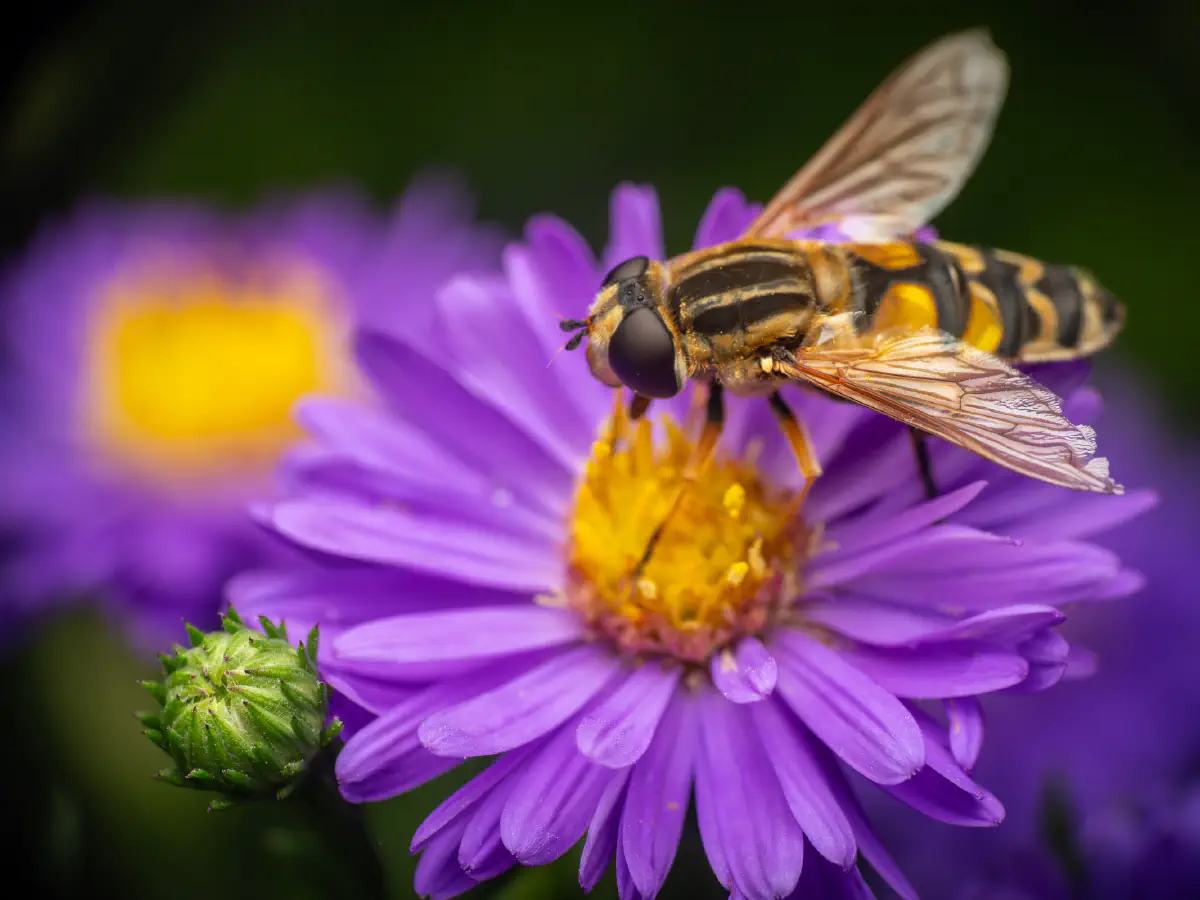
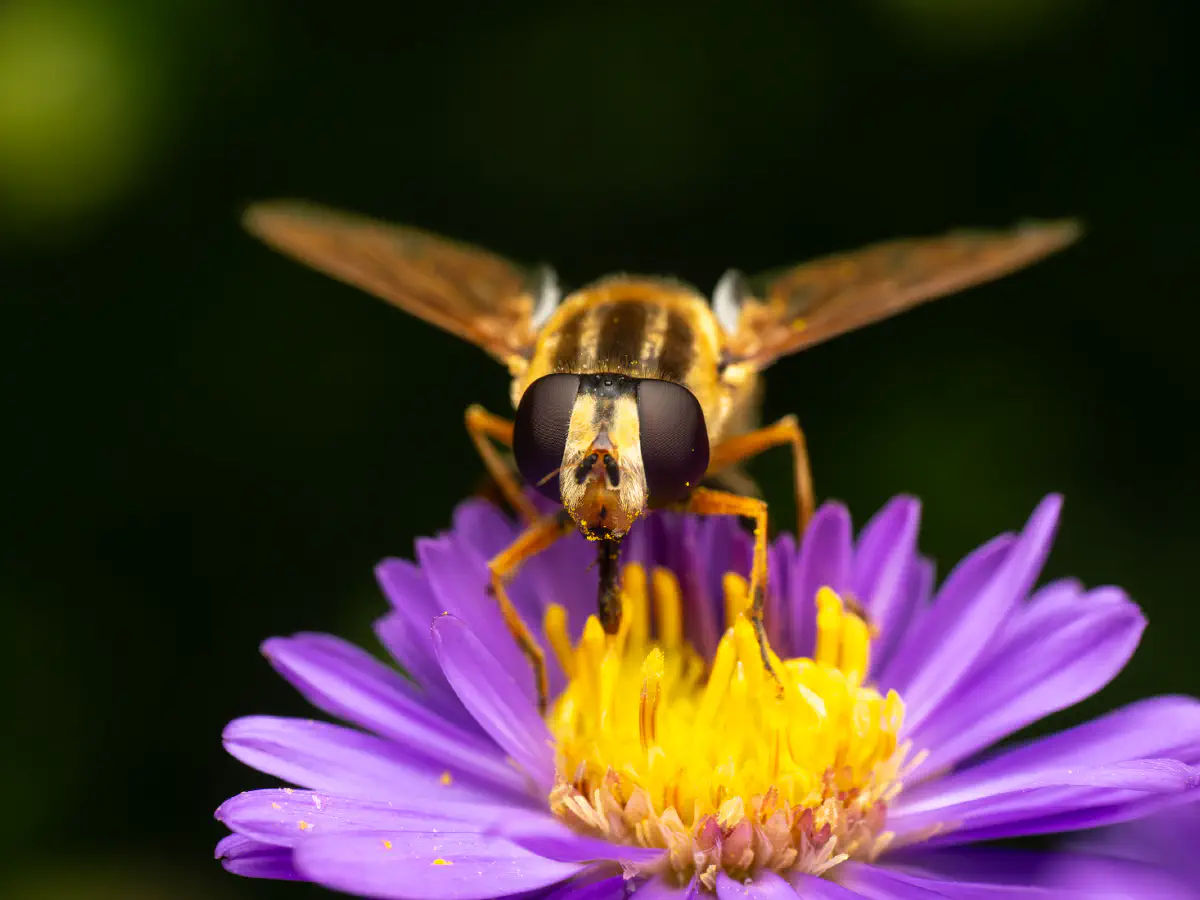
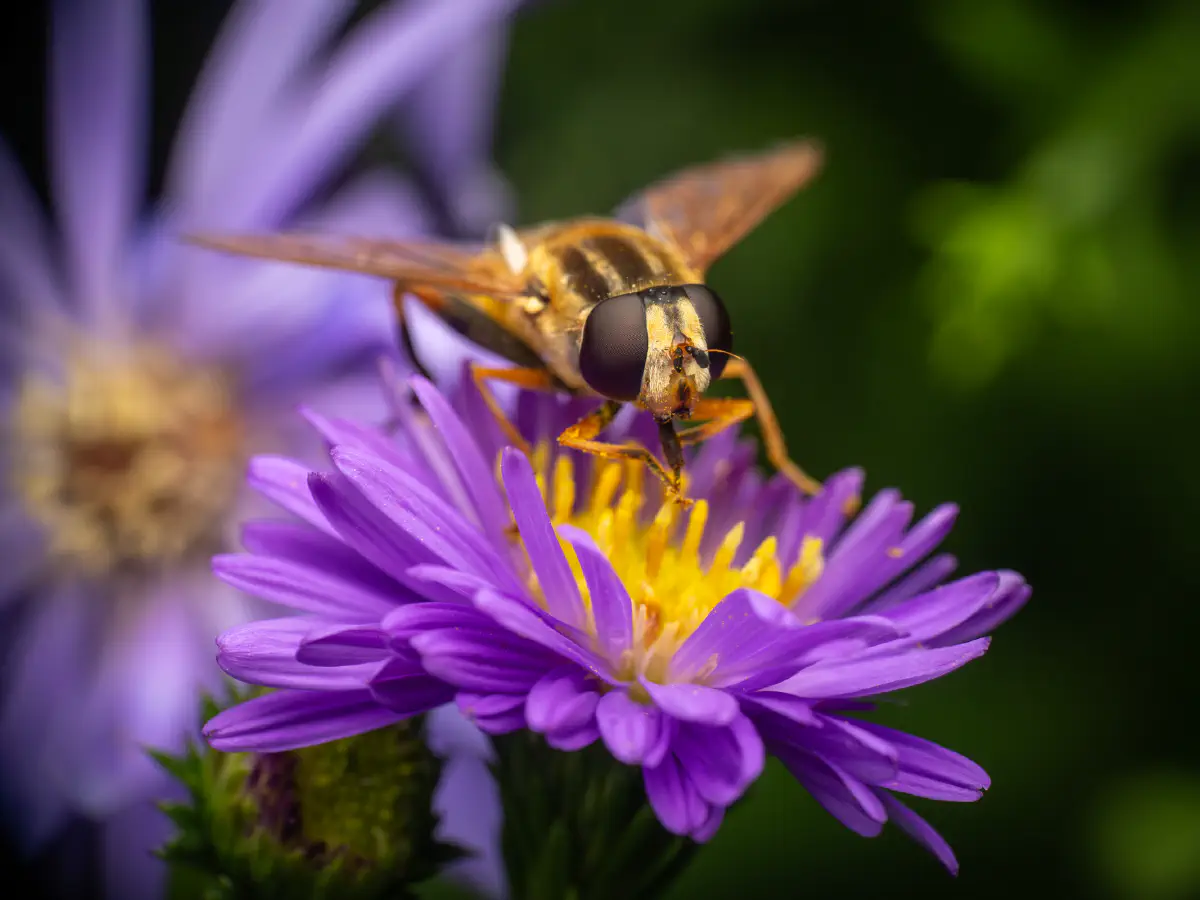



This is not intended to be a dry lexicon. Personal stories and sensitive articles form the framework for our pictures: „Night at the farmhouse“
The human world is exciting and Hugo's curiosity is simply too great, so every night he sets off on an adventure and risks everything.
